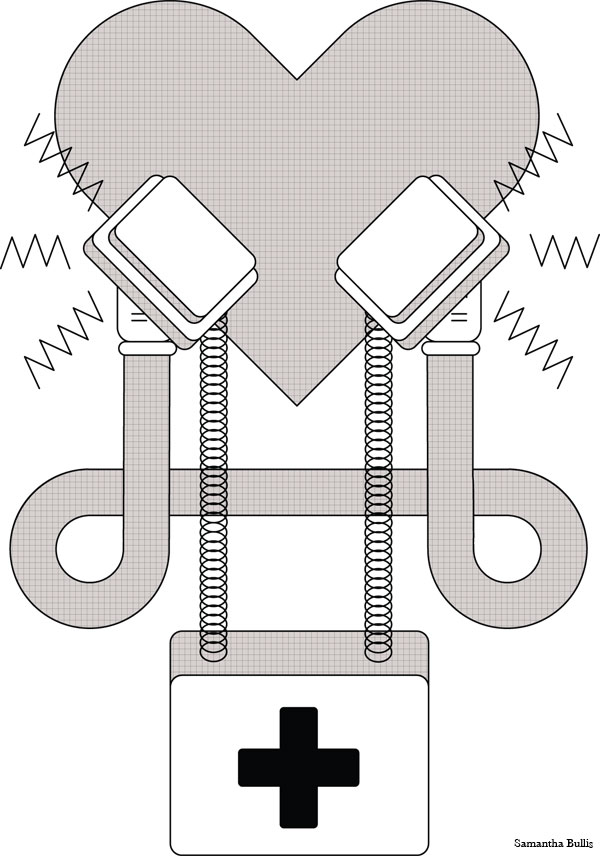Earlier this year in August, Huskies basketball player Dwayne Harrison suffered a cardiac arrest while playing at the Lawrence Heights Community Centre. It was the quick action of a custodian, who used a defibrillator until medical help arrived on the scene, which saved his life.
A defibrillator is an apparatus which is used to control heart muscle movement which occurs due to uncoordinated contraction of the individual fibrils, by application of an electric current to the chest wall or heart.
But how equipped is George Brown College (GBC) when it comes to handling medical emergencies?
First-aid centres are located at the St. James, Casa Loma and Waterfront campuses of GBC. Although there are no doctors or nurses at the centres, qualified attendants are certified to assess and treat minor injuries and illnesses. Transportation is provided to the nearest walk-in clinic or hospital in situations when proper medical treatment is required.
“The treatment we provide is situation dependent. I have some students who are worried about going to the hospital because they are worried about the cost. It all depends on the individual, how bad it is. We can certainly inform them about best choices and consequences, but the decision is up to the individual, every adult is allowed to take their own decisions,” said Daniel Whitworth, a health and safety technologist at St. James.
Emergency medical services are called for life-threatening matters.
The first-aid centres are equipped with first aid supplies, scales, blood pressure monitoring, oxygen and automatic external defibrillators (AEDs).
AEDs are located at various spots within the campus for easy and quick access. Currently, St. James, Casa Loma and Waterfront campus have four AEDs each and the GBC Theatre School has one.
“There are studies about certain cardiac arrests and response time for AEDs and the convention that most people have is for every minute you are waiting for the defibrillator to arrive, survival rates drop to 10 per cent,” said Whitworth. “(The) college is committed to buying more AEDs.”
All program level first-aid courses and safe walk staff are mandated to have AED training. The athletics association is also required to carry one when they are travelling.
Other facilities include first-aid kits located throughout the college at various spots. “At 300 Adelaide, where they cut and burn themselves on a regular basis as a part of the program, they have a kit in every single lab and it’s re-stocked every day,” said Whitworth.
“I have students come in just to weigh themselves on scale; I have some students come in to have their blood pressure checked. We have a smoking cessation group as well which is run through our department,” said Whitworth.
The smoking cessation peer group educates students on campus about the ill effects of cigarettes.



